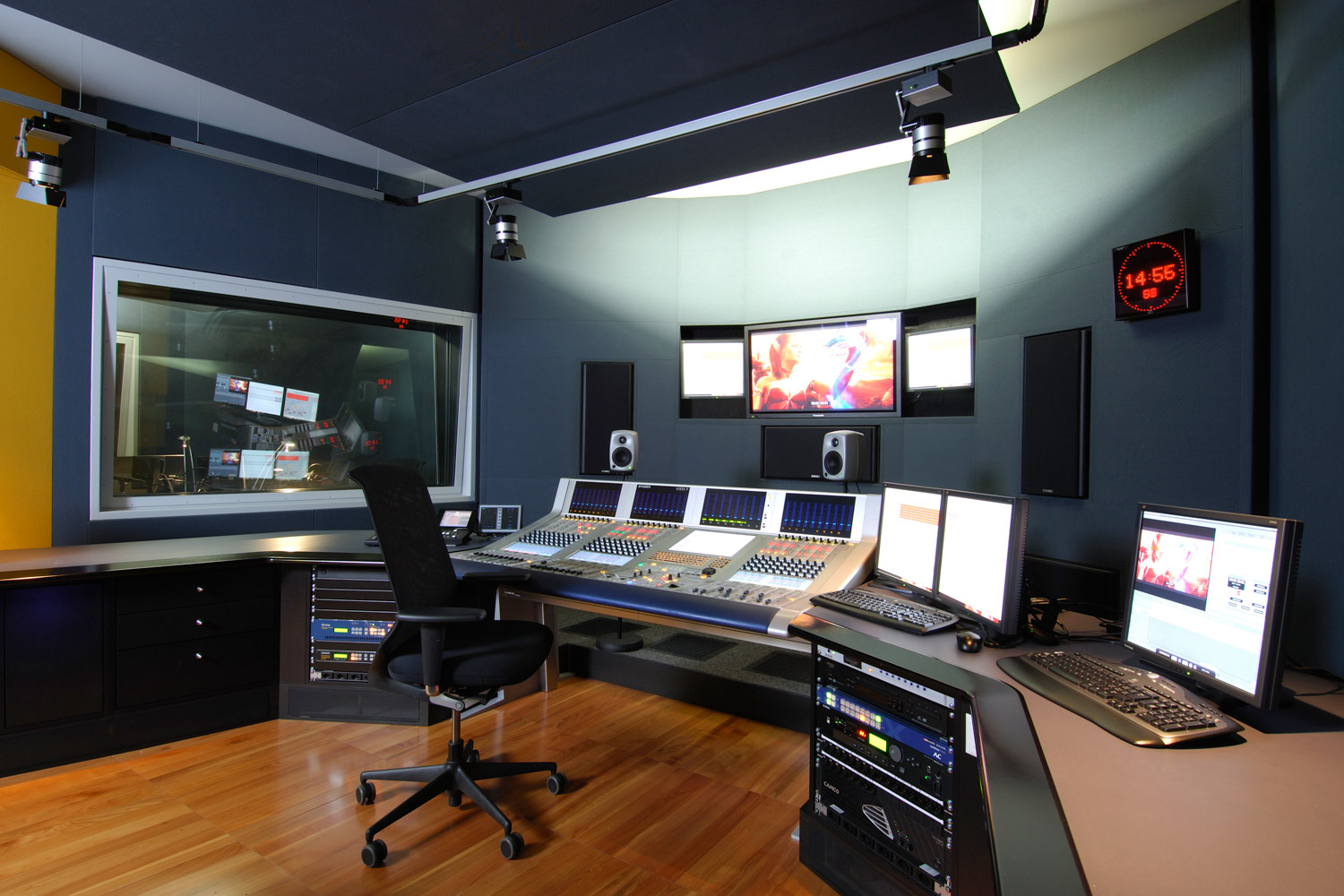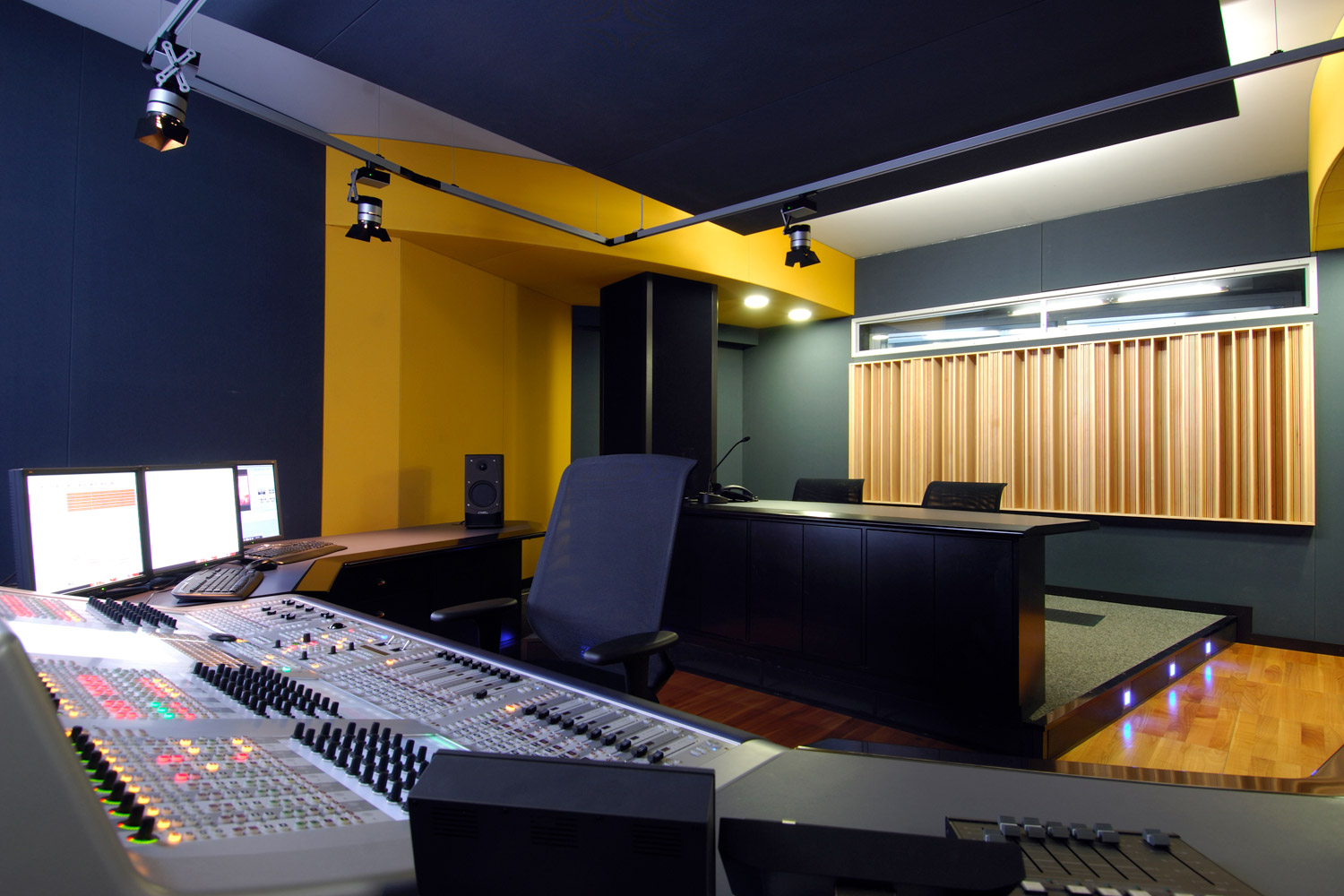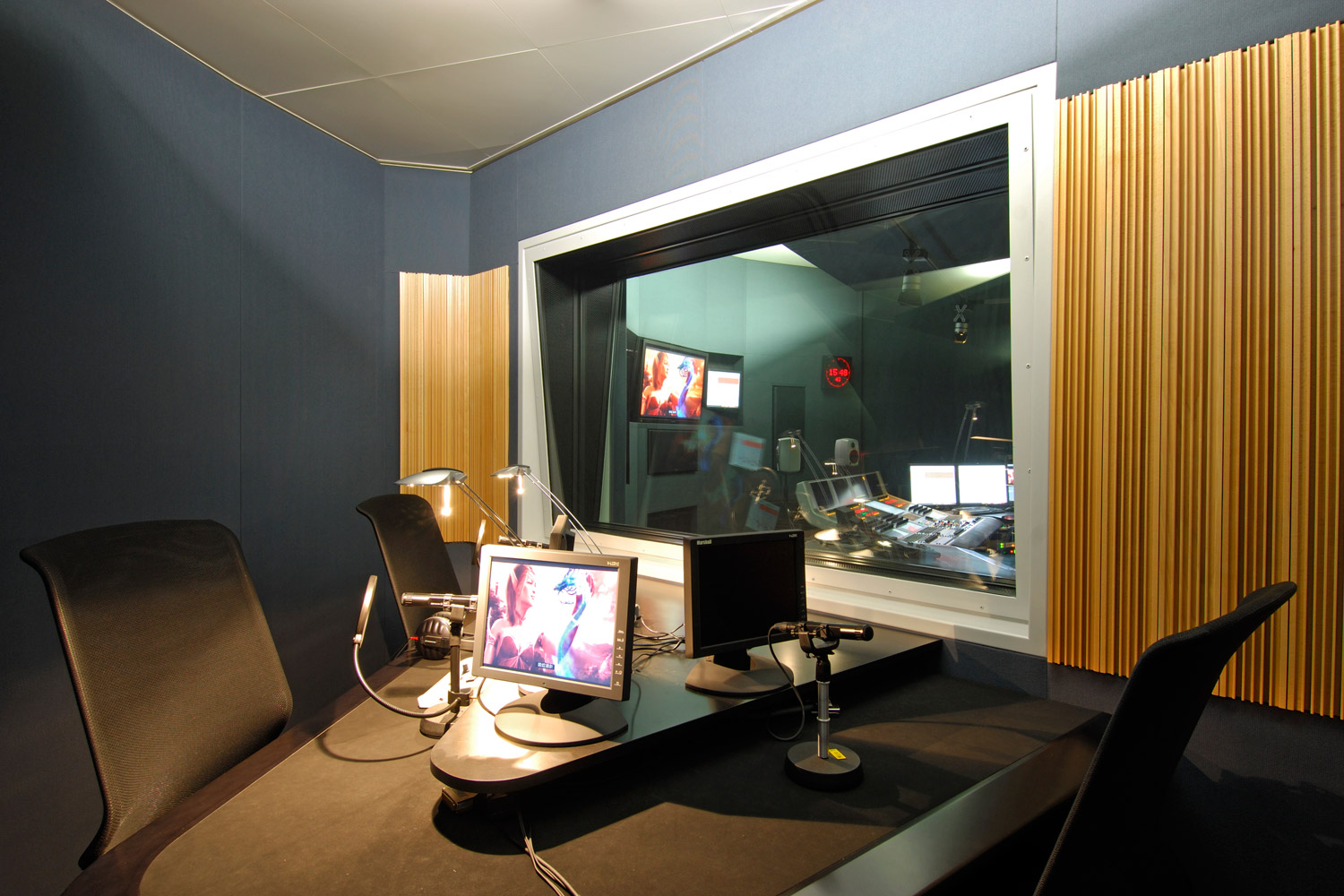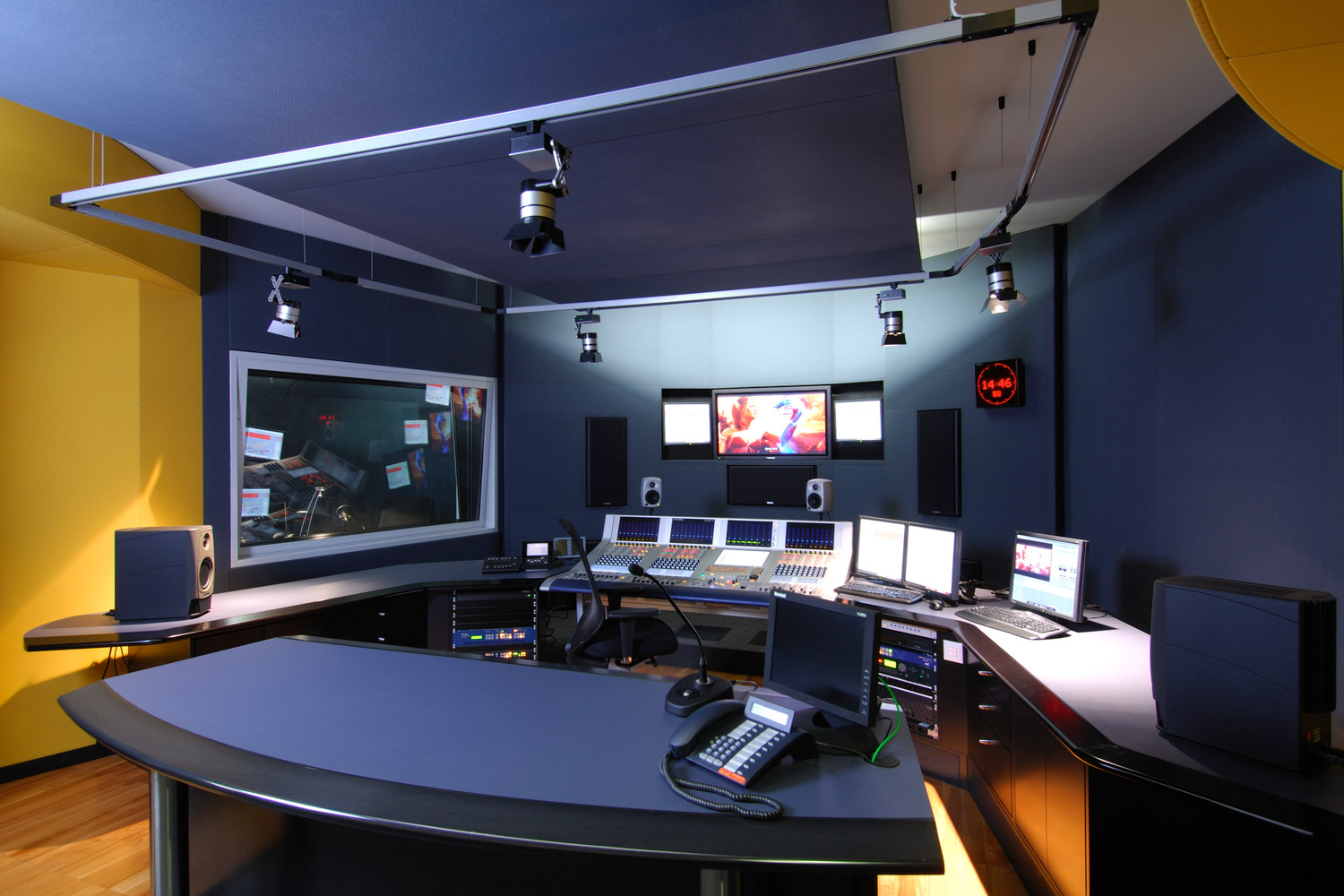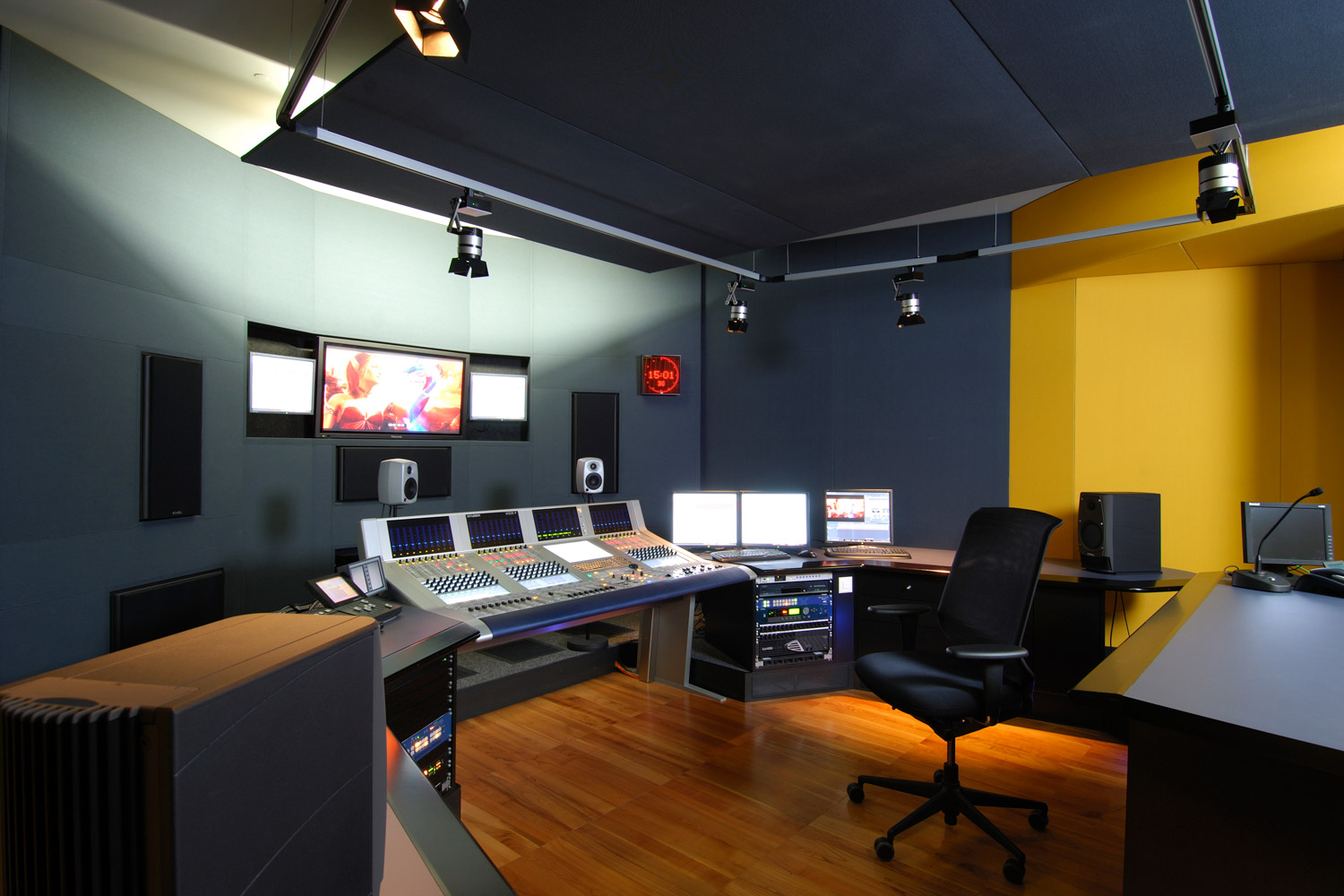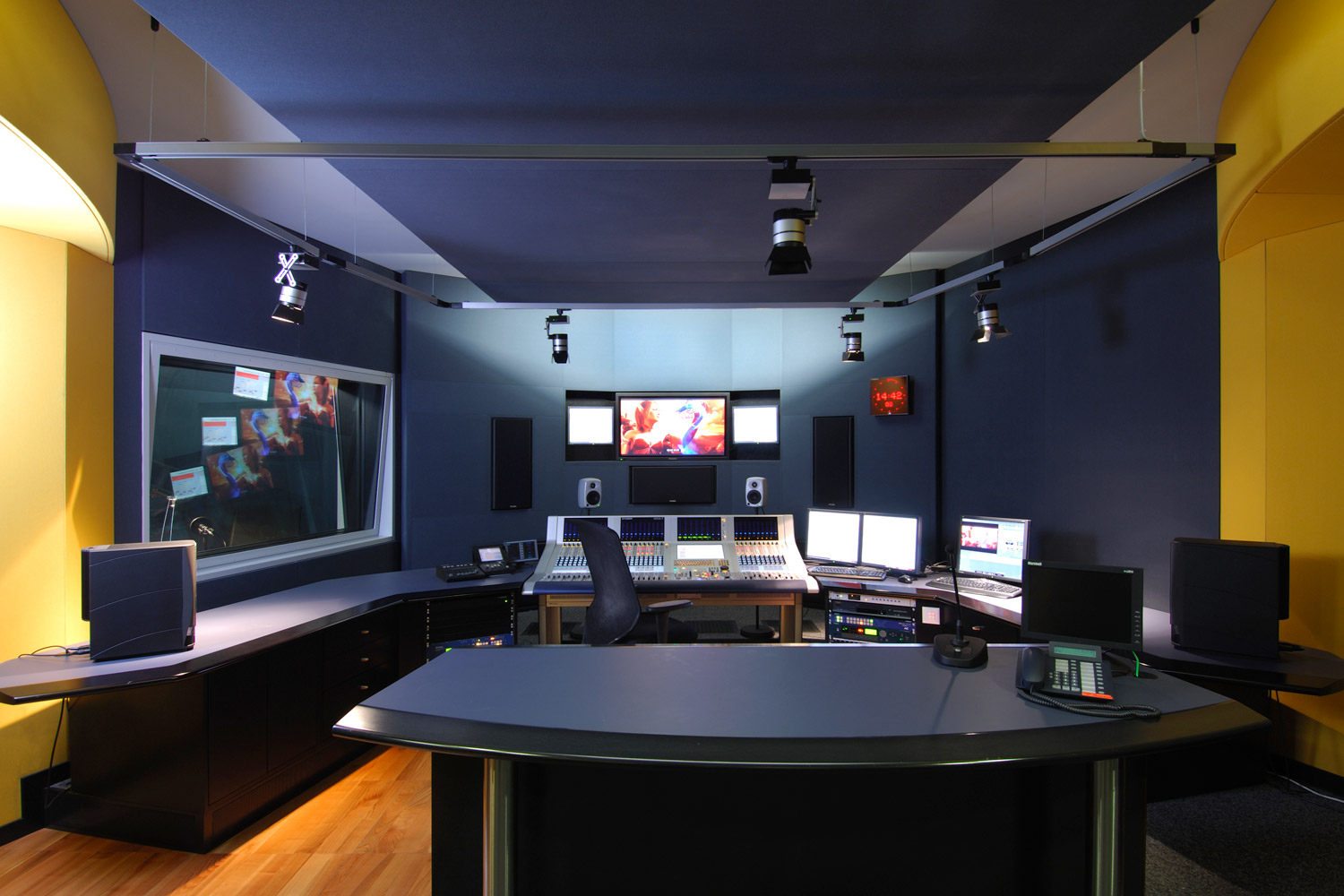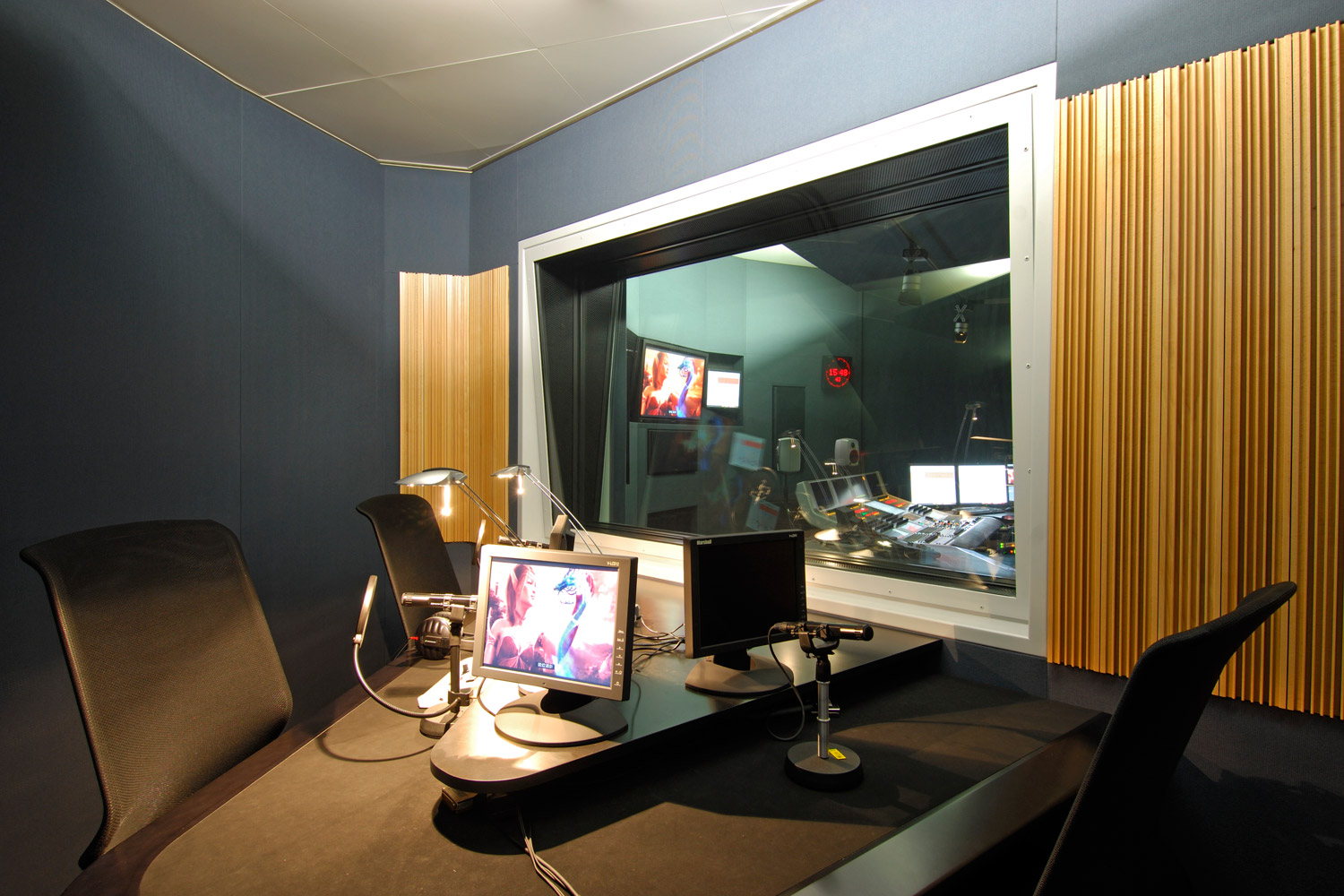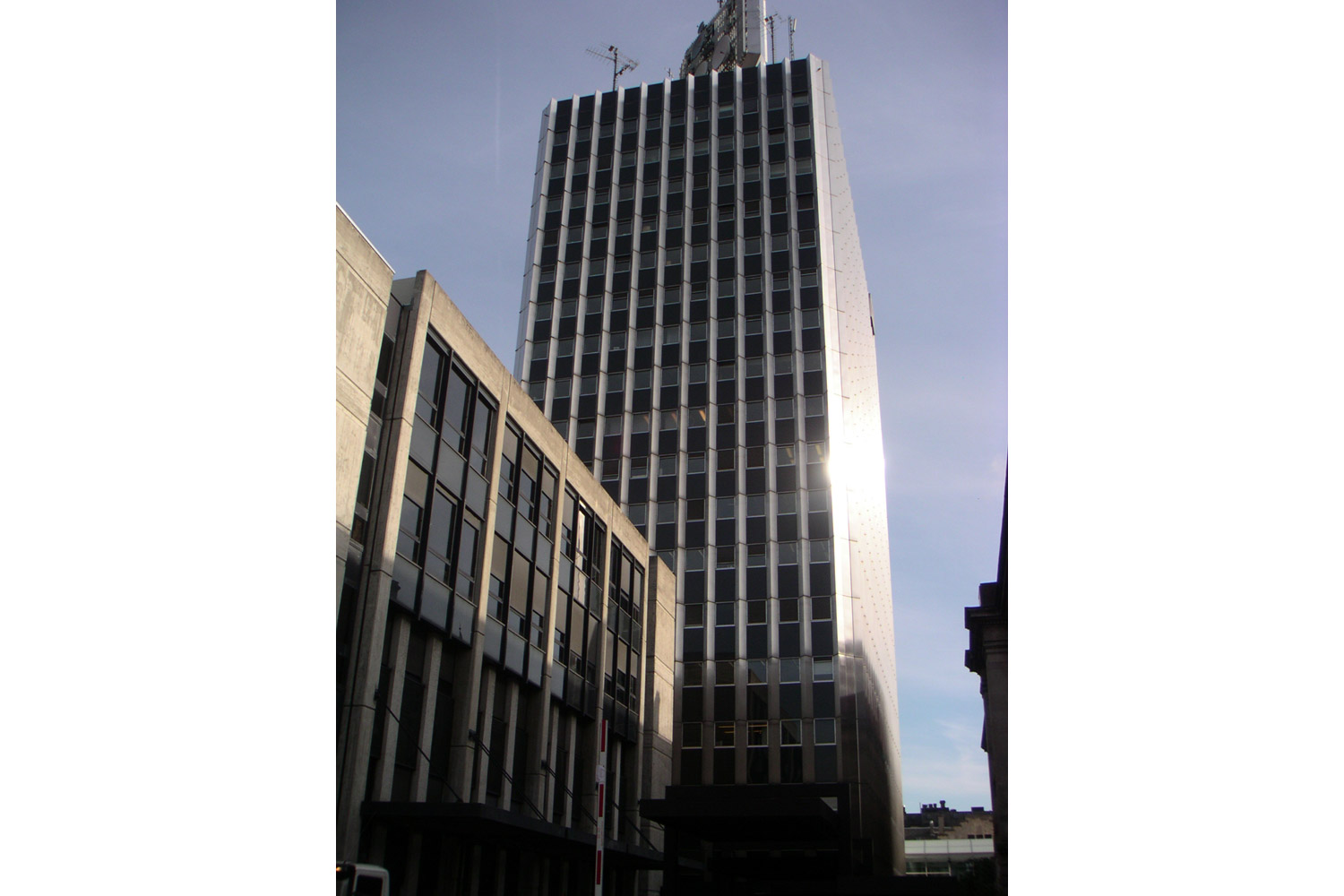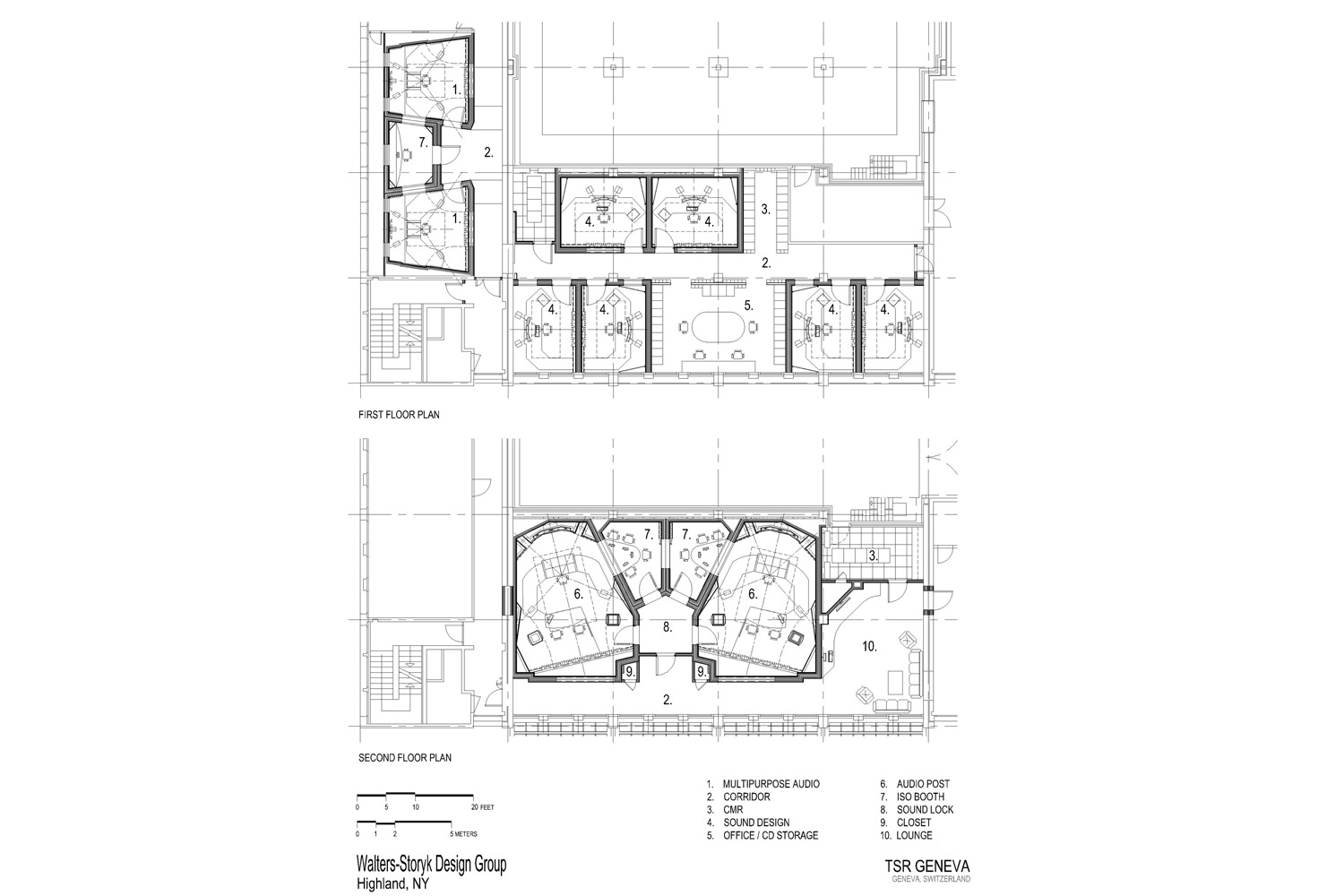Project Description
Overview
Télévision Suisse Romande (TSR) is Switzerland’s national broadcaster for the French speaking section of the country. This beautiful and peaceful area with cities and villages as renowned as Geneva, Gruyère or Montreux is home to a national and international mix of personalities, some of them well-known celebrities such as Phil Collins or Michael Schumacher.
The TSR tower, which happens to be the highest building in the city of Geneva and visible citywide, was originally built in the 70s and served as the original home for the audio rooms, a number of other technical facilities, as well as offices. The tower is scheduled for a complete overhaul over the next few years, and the technical facilities therefore needed to be re-located to other buildings on the TSR campus. In parallel with the new construction, the entire technological infrastructure was overhauled as well – in fact, the TSR facilities are now prepared to take the step towards completely tapeless operation.
Program
The audio production facilities consist of two large (40 square meters) 5.1 control rooms with an attached isolation booth each, used for TSR’s in house productions (straight-to-air as well as pre- or post-produced audio content and a highly acclaimed DVD publishing arm) and external clients as well. In addition, two medium-sized (20 square meters) multi-purpose control rooms are available with one shared isolation booth and a total of six sound design suites. The sound design suites are accompanied by a large CD discography and an open office area for the respective library management and personnel.
The audio rooms are laid out on two adjacent floors that connect by stairways on both ends of the floors. Each floor has a dedicated Machine Room with independent climate control, a backup cooling system, fire repressing systems and emergency electrical power facilities. The first floor offers a leisurely lounge for TSR personnel, clients and guests.
Structural Acoustics
In terms of structural acoustics, two major troublesome issues came up during the planning phase. First, the neighboring and very substantial principal TV shooting stage was isolated only by a thin brick wall from the future 5.1 audio post control rooms. Second, the concrete slab at the base of the lower of the two future audio floors was quite a bit thinner than anticipated during conceptual planning. These two issues were resolved by removing the upper layer of the lower slab – therefore reducing the weight on the slab – which then made it possible to build a sealed bottom-to-top brick wall alongside the TV shooting stage wall. The individual control rooms and the isolation booths are built as room-within-room units, having completely decoupled (non-touching) walls, floating floors and spring-hung ceilings. Acoustical doors were provided by IAS.
Room Acoustics
The entire Swiss public broadcast world has a number of internal room acoustics standards it wishes to adhere to. These proprietary standards, which originate from the 1980s, have been complemented with current ITU/EBU standards to properly deal with issues in relation to 5.1 production environments. These standards offer precise guidelines in terms of room geometry, reverberation characteristics and loudspeaker positioning.
Modern room acoustical tools were used extensively throughout the audio rooms: traditional porous absorption (e.g. absorber baffles by Texaa) can be found alongside metal and rubber membrane low frequency absorbers by Pawel and VPR. Rear wall diffusors by RPG facilitate a smooth sounding, balanced listening experience due to reduction of direct reflections but without the drawback of increasing total absorption in the room. The Room Acoustics have been entirely developed with the aid of computer simulation software. This approach ensures that the issued architectural construction drawings will actually translate to world-class acoustics and make it possible to listen to music being replayed in the virtual computer model of the spaces.
After completion of the project, acoustical measurements were preformed throughout the facility. As a result, all the control rooms show an acoustical behavior that is close to a perfect match to the ITU/EBU recommendations: the reverberation times are fully within the specified upper and lower limits, and distributed very linearly over all 1/3rd octave frequency bands. Even at low frequencies (below 100Hz) the rooms are very well balanced.
Technology
As usual for up-to-date broadcast facilities, the audio signal path is all digital. The audio post rooms are centered around a Swiss made Studer Vista 7 digital production console. The Studer’s “Vistonics” console topology with its rotary controls, basically mounted on top of a flat panel display, allows very fast and intuitive access to all vital parameters.
The audio is replayed through a PMC 5.1 audio monitoring system (Front Channels: 3x IB2S, Surround Channels: 2x AML1), and a secondary Genelec stereo monitoring system. The frequency responses measured after the install are very even, especially for loudspeakers that do not have any active system equalizers in the signal path. The main recording and editing surface is a Swiss made Merging Technology, Pyramix DAW (Digital Audio Workstation), which is capable of recording and editing audio on both SACD and DVD-A resolution level. The Pyramix system is complemented with the Merging Technologies VCube, a hard-disk based video player / recorder system designed specifically for use in audio post production and operates fully integrated with Pyramix. The 5.1 audio post rooms are equipped with a TC Electronic System M6000 processor offering numerous features like upsample limiters, multiband processors, up- and down conversion, George Massenburg Equalizers and other tools. A full surround sound encoding, decoding, quality control and monitoring chain by Dolby is available in these rooms as well.
The two multipurpose mixing rooms house a Yamaha DM2000 digital production console and PMC audio monitoring. Video and film content are being displayed on 42 inch Panasonic plasma screens in all control rooms.
Links
Read feature in TV Technology Europe. – Read the entire article by downloading the PDF now.

